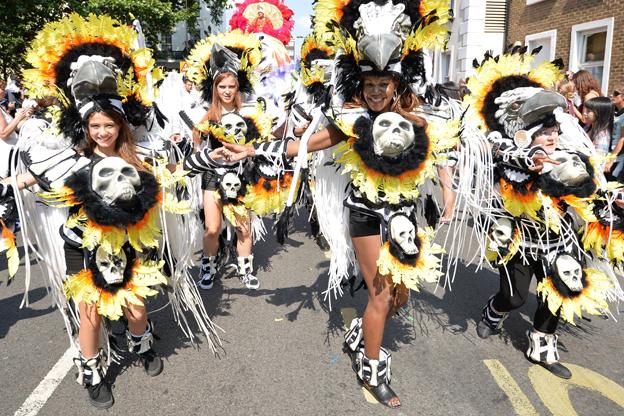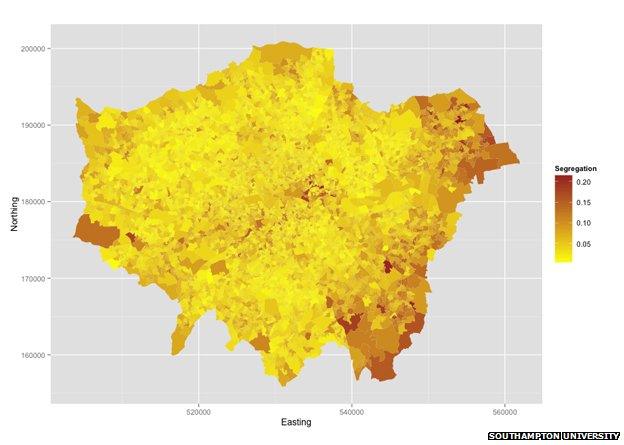Is diversity good or bad for community cohesion?
- Published
- comments

Entertainers at this year's Notting Hill Carnival
When I met the legendary American social scientist Robert Putnam a decade ago he took me aside and revealed, almost conspiratorially, that birds of a feather flock together.
The academic, who famously chronicled the decline of US social capital in his book Bowling Alone, was trying to explain research that in the short term at least, showed a negative correlation between diversity and community cohesion.
"In ethnically diverse neighbourhoods residents of all races tend to 'hunker down'," Putnam's study concluded. "Trust (even of one's own race) is lower, altruism and community cooperation rarer, friends fewer."
But now comes new academic research looking at London which turns this idea on its head.
Social cohesion in the capital, it concludes, is "significantly higher in more ethnically diverse neighbourhoods", once deprivation has been taken into account.
This is a startling assertion. The accepted wisdom among academics and policy makers, as the paper reminds readers, is that "ethnically diverse communities are characterized by distrust, low levels of social cohesion and disputes regarding the equitable provision of public goods".
But diversity may not be the cause of social tension. "In fact, in the highly diverse neighbourhoods that characterise modern London, the opposite appears to be the case," the research finds.
Diversity emerges as a positive predictor of social cohesion, the paper asserts, a finding that runs counter to the large majority of published studies.
We need to unravel what is going on. As immigrants try to gain a toehold in their new land, they tend to live in poorer communities. We know that poverty is negatively associated with social cohesion.
It is also well understood that communities that are highly segregated tend to have much lower levels of trust. Think Beirut for example.
In order to understand the part diversity plays in the community life of a neighbourhood, you need to extract deprivation and segregation from the equation. And the research team did just that, external in what they suggest may be the most ethnically diverse conurbation on earth.
Mapping diversity and segregation

Diversity map of London - diversity represented by darker areas

Segregation map of London - segregated (dark) areas are few and far between...

... and a segregation map of England
"If living in an ethnically diverse neighbourhood causes people to distrust and avoid one another, then we should be certain to find evidence of the phenomenon in London," the researchers muse.
Using very detailed population data, what emerges is that London, despite its ethnic diversity, is among the least segregated parts of England. The one red slash across the yellow wash of the map looks to be where some of the poorest neighbourhoods in the East end rub up against the wealth of docklands and the city.
What the new research calculates is that ethnic diversity helps improve community life, "once adequate account is taken of the spatial distribution of immigrant groups within neighbourhoods and the degree of social and economic deprivation experienced by residents".
It turns out that the positive effect of diversity is strongest among younger people and weakest among the oldest people - actually becoming negative for people over 85. Segregation works the other way around - the impact of a more segregated community is most negative for young people while, for those over 65, segregation is a positive.
In many ways, the capital is a poor model for what happens in the rest of the UK. Professor Patrick Sturgis is director of the ESRC National Centre for Research Methods and the study's lead author. He accepts that London's unique immigrant and ethnic make-up "renders it sui generis" (one of a kind).
But what this paper suggests is that where you have non-segregated and relatively prosperous communities, diversity is likely to improve community life, not damage it.